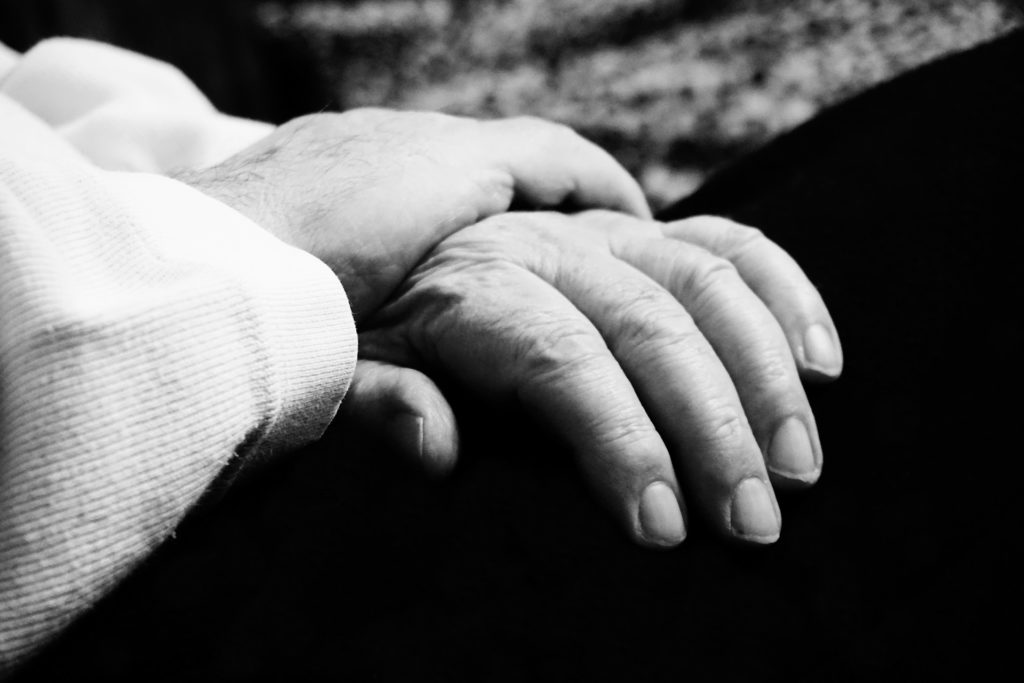A recent study, published in BMC Psychiatry, explores the factors associated with involuntary hospitalization for psychiatric patients. The study takes place in Switzerland where involuntary hospital rates are among the highest in Europe. The results indicate that involuntary admissions were most common in individuals who were older, widowed, living in a specific region, and had a primary diagnosis of schizophrenia or an “organic mental disorder.”
The authors, Silva, Golay, and Morandi, explain, “These results allowed us to trace a clear profile of high-risk patients and to provide several inputs that could help local authorities, professionals, and researchers to develop better-targeted alternative interventions reducing the use of coercion.”

Despite a lack of evidence concerning the benefits of coercion alongside well-documented evidence of its harmful effects, involuntary hospitalization for psychiatric patients is not uncommon. In Europe, the rates of involuntary hospitalization range between 3%-30% due to varying legal frameworks and “individual-related, system-related, and area-related characteristics, identified as predictors of the use of coercive measures.”
The authors explain that at the individual level, factors that increase the risk of being involuntary treated include “being a young man, homeless, unemployed and affected by schizophrenia or by an organic mental disorder.” At the system level, the referral procedure has a lot to do with the probability of coercive practices, and at the area level, it has been found that living in an “urban area, socio-economically deprived and with a high proportion of young adults (20-39 years) and ethnic minorities increases the risk of involuntary hospitalization.”
This study aimed to clarify which of the factors could predict involuntary hospitalization to help affiliated workers be able to “recognize high-risk patients and to promote the development of better-targeted alternative interventions.”
The study is retrospective, utilizing all consecutive psychiatric admissions occurring between January 1, 2015-December 31, 2015, from 4 psychiatric hospitals in Canton of Vaud, Switzerland. The researchers had access to clinical characteristics, socio-demographic data, and psychotropic medication compliance. Of the 5,060 admissions, just 33 cases were omitted due to lack of legal status information at entry, resulting in 5,027 total accounts analyzed.
Silva and colleagues found that 62% were voluntarily hospitalized (VH) and 38% involuntarily hospitalized (IH). A significant association was found concerning marital status, specifically more widowed as opposed to single/divorced/separated individuals were found in the IH group.
The IH group also contained more people identified as having an “organic mental disorder,” schizophrenia, schizotypal disorder, bipolar disorder, and intellectual disability. Furthermore, the IH group scored higher on behaviors associated as overactive, aggressive, disruptive or agitated, cognitive delays, physical illnesses, symptoms of hallucinations or delusions, having relationship problems, and difficulties with daily tasks and responsibilities. Struggling with “medication compliance” was also linked with a higher risk of compulsive admission. The researchers add that IH stays were “significantly longer” than VH stays.
Additionally, in relation to the system level, “the model revealed that patients referred by a general practitioner, a general hospital and a psychiatric hospital presented a higher probability of compulsory admission compared to patients referred by an ambulatory psychiatrist.”
Regarding the area-level factors, one district was associated with significantly more IH than the others were. Finally, the researchers note that the variable most strongly related to further use of coercion was a history of being involuntarily hospitalized at least once during the last year.
Utilizing the finding that “people affected by organic mental disorders showed the highest odds of involuntary admission,” Silva, Golay, and Morandi underscore the importance of future research to “focus on the complex needs of this specific population and the development of new alternative treatments.” For example, one district has implemented psychogeriatric mobile teams aiming to provide home treatment as an alternative to hospitalization and appear to have promising results.
The authors note limitations to this study, including the methodology and limited variables. They conclude by promoting innovative programs and reinforcing the need for alternative tools when working with the identified high-risk patient profile.
“This study aimed to compare the socio-demographic and clinical profile as well as the referral and hospitalization process of people voluntarily and involuntarily hospitalized in order to identify which factors could be associated with the use of coercion,” explain the researchers. “Because of its proved strong negative effects on patients, it is a paramount goal of the local authorities to limit as much as possible the recourse to this practice.”
****
Silva, B., Golay, P., & Morandi, S. (2018). Factors associated with involuntary hospitalization for psychiatric patients in Switzerland: a retrospective study. BMC Psychiatry. 18(1), 401. doi: 10.1186/s12888-018-1966-6 (Link)















What is an “organic mental disorder”? You mean these people don’t have “brains”? An “organic disorder”, to my way of thinking, would be a “brain disorder”. An “organic mental disorder” is a side of the argument as to whether “mental disorder” is “organic” or “functional”, and to what extent. I simply don’t think they’ve won it by implying that involuntarily committed patients (sic) tend to have it while voluntarily committed patients (sic) don’t tend to have it. I would also question whether, if we’re dealing with “brain injury”, the best treatment for it would be imprisonment. How do you get people involuntarily committed, circumscribing human rights, in the first place? You make a mountain out of a molehill in exaggerating the extent of the problem. Doing so could mean ascribing “brain disorder” to erratic behavior. I know public safety is the issue, but sometimes the fear of harm to the public is disproportionate to any danger emanating from the facts. My point? I seriously doubt that some kind of bias wasn’t behind this study to begin with. Just consider, how convenient? Involuntary patients have “brain disorders” while with voluntary patients it’s merely a matter of “behavioral issues”. You think?
Report comment
https://en.wikipedia.org/wiki/Organic_mental_disorders
I think this is just more psychobabble double-talk to rationalize psychiatric harm of innocent people for profit.
“Because of its proved strong negative effects on patients, it is a paramount goal of the local authorities to limit as much as possible the recourse to this practice.” If the local authorities actually wanted to “limit as much as possible the recourse to” force treatment, they should make it illegal.
And forced and coerced treatment should be made illegal. Forced treatment is used to defraud insurance companies out of payment for unneeded “treatment” by criminal doctors like this psycho.
http://chicagoist.com/2013/04/16/chicago_hospital_owner_doctors_arre.php
https://www.justice.gov/usao-ndil/pr/oak-brook-doctor-sentenced-two-years-prison-connection-kickback-scheme-sacred-heart
Yes, 135 lb, non-violent, innocent mommies must be forced treated, when they have been handed medical proof of prior malpractice, because this is a “danger” to her former doctors.
Is proactive malpractice suit prevention what the “danger to self or others” clause is supposed to be used for?
Report comment
The system is set up to divide and conquer so that the patients who go voluntarily and whose behaviors are less violative of others rights will see other patients as more deserving to be there and fundamentally this helps them keep patients at each other’s throats as well.
If they set up the game so that some patients histories of abuse and adversity can be disregarded as tertiary to an underlying illness of the brain that would have happened anyway, then they can justify locking up those psychiatric prisoners and subjecting them to brain damaging yet profitable “treatments”.
What they don’t say is that those who just have “behavior issues” instead of illness can also be locked up. But if it’s just their behavior is bad, where do those people go? Prison. The only difference between the psychiatric inmate and the criminal is that the psychiatric inmate is locked up pre-crime.
The same divide and conquer tactics are used in our political system to divide people into good and bad, contributors and takers, deserving and undeserving. It’s all very plain to see for anyone willing to examine the underlying social forces and actors involved. If the system weren’t set up to pit groups of people against each other, we wouldn’t be in this mess.
Report comment
There is one other difference. Inmates have a defined term or sentence. Psych “inpatients” can be “sentenced” for as long as they want.
Report comment
That’s not always true anymore as more inmates are indefinitely civilly committed to forensic psychiatric units after *completing* their prison terms.
This began with sex offenders and was pretty easy to implement because everyone justifiably hates sex offenders, but this is going to be more widely applied, you mark my words. It’s been upheld by the US Supreme Court as constitutional and doesn’t violate double jeopardy laws.
So let me be clear, even after completing your potentially decades long prison sentence, you then get faced with a civil commitment proceeding and deemed to be too dangerous too release.
There is a slippery slope ongoing since the Clintons “tough on crime” approach to winning Americans hearts. It’s why the US imprisons (criminally or psychiatrically) many times more people than the rest of the world, and exponentially more percentage-wise considering population differences between us and other countries Americans themselves consider to have punitive and controlling laws such as China and Russia.
Let freedom ring, indeed.
Report comment
Don’t forget the rise of for-profit, private prisons in driving what you’re talking about…. And remember that the 13th Amendment specifically allows slavery, *IF* the person has been convicted of a crime. We’re not as “free” as we’d like to believe.
Report comment
I think by “organic” they mean basically a faulty brain as opposed to a depressed or a traumatized one. In the UK I was told the “this is not extreme version of normal, it’s ORGANIC, a biochemical babble babble”. They think people who hear a voice are fruit loops and they are simply wrong.
Report comment
Still waiting to see what exactly the evidence is of these “organic” brain problems.
Report comment
I’ll jump in here with an anecdote about an acquaintance who was involuntarily hospitalized (twice) in a psychiatric hospital in the Canton of Vaud. The first time she was hospitalized she was there for a year. She was given a brain scan because the staff thought she had a lesion that was causing her to believe that her ex was an imposter (Capgras Syndrome). That would tie in with the idea of “organic” but of course, they found no lesion. To be involuntarily committed in the Canton of Vaud doesn’t mean that you are not allowed to leave the hospital. On the contrary. She was free to leave for the day, no one bothered to ask her where she was going, and i suppose if she didn’t show up for dinner, maybe the staff would go looking for her, but where would they even begin to look? She was usually somewhere miles away.
Report comment
I wonder about what this statistic means: “In Europe, the rates of involuntary hospitalization range between 3%-30% due to varying legal frameworks and ‘individual-related, system-related, and area-related characteristics, identified as predictors of the use of coercive measures.'” 3-30% of what? of the population? of patients? of what kind of patients?
Report comment
“A rage outburst was defined as sufficient agitation and loss of control such that the child was unable to “time out” (i.e. sit in a chair for 10 minutes on being told to do so) or was a danger to himself or others and a higher level of intervention was needed. In order to compare the efficacy of medication against usual treatment (i.e. seclusion/restraint), a first rage outburst in the hospital was treated non-medically; that is, the child was placed in an isolation room. The door remained open if the child was able to regain control and take the time out in the room; otherwise the door was closed. If there was a second episode, the child was told “You need some medicine to help you get back in control. Take this medicine or we may have to give you a shot”. If agreeable, the child was given 0.015 mg/kg of liquid risperidone.”
Read more https://www.ncbi.nlm.nih.gov/pmc/articles/PMC2990969/#R23
Report comment
It’s interesting what I’ve learned since my Lyme Disease diagnosis, especially about its frequent coinfections. For example, Bartonellosis is a common tick-borne infection that can be transmitted with or without cooccuring Lyme infection. Bartonella is known to cause “rage attacks”. Children are the most frequently infected with tick borne infections because of the greater amount of time spent playing outdoors in tick habitat. Why aren’t children being tested for infectious diseases that cause these symptoms? The answer is that labeling them with mental illness and treating them with long term psychotropics is far more profitable than trying to find an underlying medical problem or identify the social factors contributing to a child’s hostility and impulsivity.
Divide and conquer, always.
Report comment
Ugh! That’s all I can think to say. Ugh!
Report comment
I think it’s very important to identify those psychiatrically labeled persons most at risk for being coerced, so if necessary they can be rounded up for their own good and kept safe from those who might coerce them, whether they like it or not.
Report comment